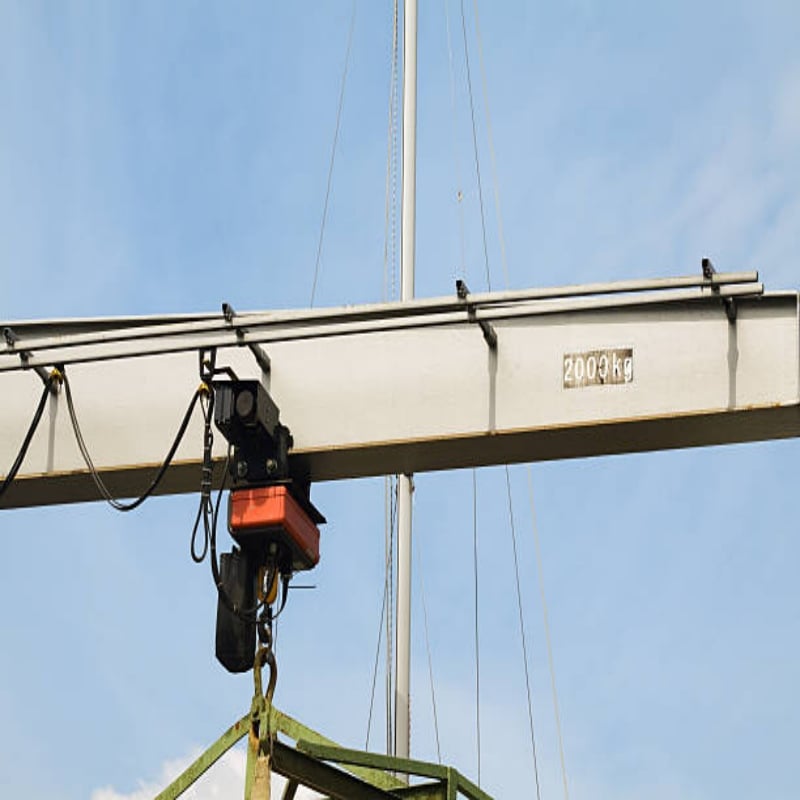Introduction: Understanding the Clamp-lifting Crane
A clamp-lifting crane is a powerful piece of equipment used in various industries for lifting and transporting heavy loads. With its unique design and capabilities, this type of crane offers efficient and safe lifting solutions. In this article, we will explore the different aspects of a clamp-lifting crane, including its mechanism, applications, benefits, maintenance, and more.
1. What is a Clamp-lifting Crane?
A clamp-lifting crane, also known as a clamping crane, is a specialized type of crane that utilizes clamps or grips to securely hold and lift loads. These clamps are typically adjustable to accommodate a wide range of load sizes and shapes. The crane's lifting mechanism is designed to ensure stability and safety during the lifting process.
2. How Does a Clamp-lifting Crane Work?
The working principle of a clamp-lifting crane involves the use of hydraulic or mechanical clamps that grip the load securely. The clamps are attached to the crane's lifting mechanism, allowing it to lift and transport heavy loads with precision. The crane operator controls the clamping and lifting functions using a control panel, ensuring smooth and controlled operations.
3. Applications of Clamp-lifting Cranes
Clamp-lifting cranes find applications in various industries that require the lifting and transportation of heavy loads. Some common applications of these cranes include:
- Construction sites: Clamp-lifting cranes are used to lift and position heavy construction materials such as steel beams and precast concrete panels.
- Shipping yards: These cranes are employed to load and unload cargo containers from ships or trucks.
- Manufacturing facilities: Clamp-lifting cranes aid in moving large machinery and equipment within manufacturing plants.
- Warehouses: These cranes are used to stack and transport heavy pallets or containers.
4. Benefits of Using a Clamp-lifting Crane
Investing in a clamp-lifting crane offers several benefits for businesses. Some key advantages of using this type of crane include:
- Increased efficiency: Clamp-lifting cranes enable faster and more efficient handling of heavy loads, reducing manual labor and improving productivity.
- Enhanced safety: The clamping mechanism ensures secure gripping of loads, minimizing the risk of accidents or load slippage during lifting.
- Versatility: With adjustable clamps, these cranes can handle a variety of load shapes and sizes, making them versatile for different applications.
- Time and cost savings: By streamlining lifting operations, clamp-lifting cranes save time and reduce labor costs, resulting in overall cost savings.
5. Factors to Consider when Choosing a Clamp-lifting Crane
When selecting a clamp-lifting crane for your specific needs, there are several factors to consider:
- Load capacity: Ensure that the crane has the capacity to lift the maximum load you require.
- Lifting height and reach: Consider the maximum height and reach needed to perform your lifting tasks.
- Control system: Choose a crane with an intuitive control system that allows for precise and safe operations.
- Maintenance requirements: Assess the maintenance needs of the crane to ensure it aligns with your capabilities and resources.
6. Safety Measures for Clamp-lifting Crane Operations
Operating a clamp-lifting crane requires adherence to strict safety guidelines. Some important safety measures to follow include:
- Proper training: Ensure that operators are trained and certified to operate the specific type of clamp-lifting crane.
- Regular inspections: Conduct routine inspections to identify any potential issues or defects that may affect the crane's performance.
- Load calculations: Always calculate the weight and center of gravity of the load to prevent overloading and tipping.
- Clear communication: Maintain clear communication between the crane operator and ground personnel to avoid accidents.
7. Maintenance and Care for Clamp-lifting Cranes
Regular maintenance is crucial to keep clamp-lifting cranes in optimal working condition. Some maintenance tasks include:
- Inspecting and lubricating the clamps and lifting mechanism to ensure smooth operation.
- Checking hydraulic systems for leaks and maintaining proper fluid levels.
- Inspecting the control panel and electrical components for any signs of damage or wear.
- Ensuring that all safety features, such as limit switches and emergency stop buttons, are functioning correctly.
8. Popular Manufacturers of Clamp-lifting Cranes
Several reputable manufacturers produce high-quality clamp-lifting cranes. Some well-known manufacturers in the industry include:
- ABC Cranes
- XYZ Industries
- DEF Machinery
- GHI Engineering
9. Cost Considerations for Clamp-lifting Cranes
The cost of a clamp-lifting crane can vary depending on factors such as load capacity, reach, and additional features. It is advisable to obtain quotes from multiple suppliers and compare the specifications and prices before making a purchase decision. Additionally, consider the long-term cost implications of maintenance and any necessary spare parts.
10. Conclusion: Embracing the Power of Clamp-lifting Cranes
Clamp-lifting cranes offer a versatile and efficient solution for lifting and transporting heavy loads in various industries. By understanding their mechanism, applications, benefits, and maintenance requirements, businesses can make informed decisions when considering investing in these powerful machines. Implementing proper safety measures and regular maintenance will ensure the longevity and reliability of clamp-lifting cranes, contributing to enhanced productivity and operational efficiency.

